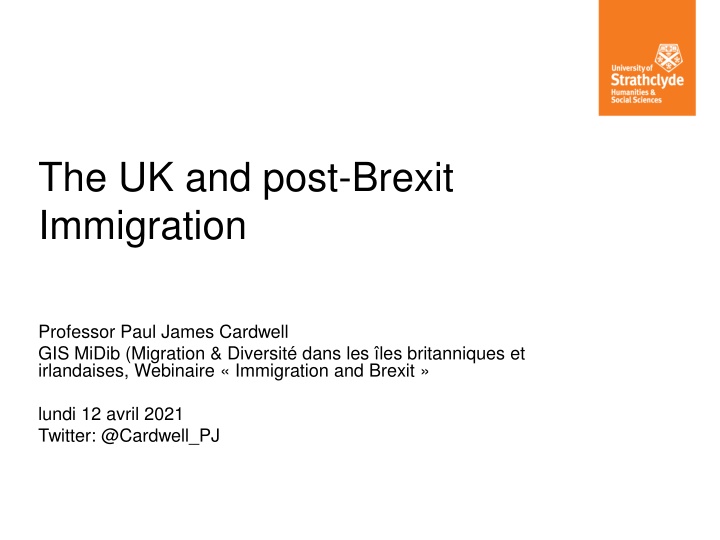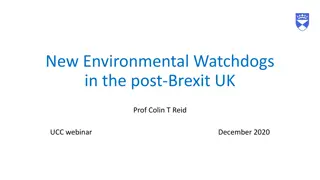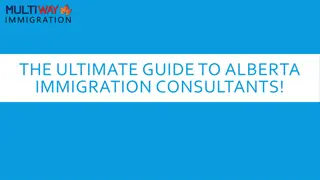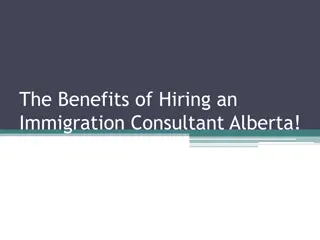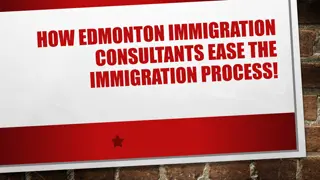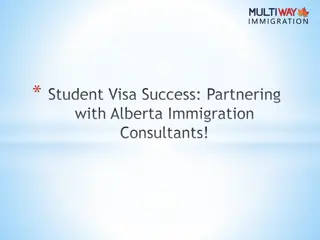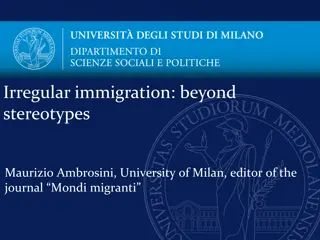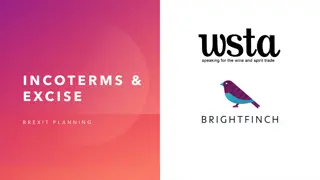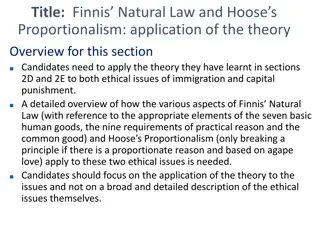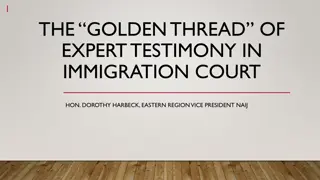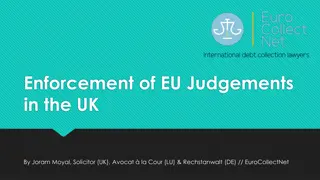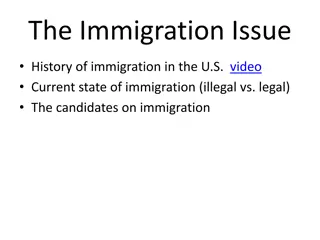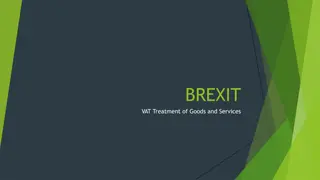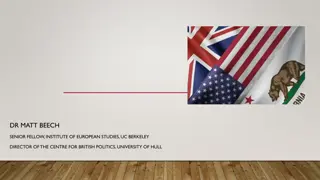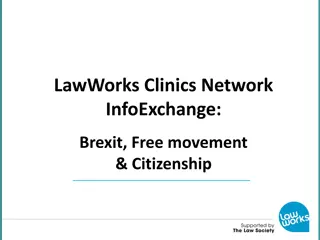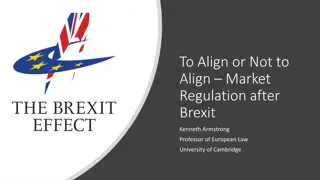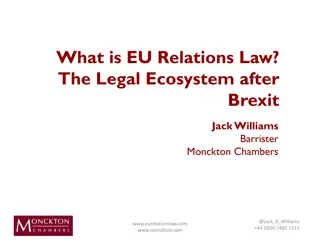The UK Post-Brexit Immigration Trends
"Exploring the impact of Brexit on immigration in the UK, focusing on free movement, high-skilled migration, and policy changes. Analyzing public sentiments, government strategies, and future directions in immigration policies post-Brexit."
Download Presentation

Please find below an Image/Link to download the presentation.
The content on the website is provided AS IS for your information and personal use only. It may not be sold, licensed, or shared on other websites without obtaining consent from the author.If you encounter any issues during the download, it is possible that the publisher has removed the file from their server.
You are allowed to download the files provided on this website for personal or commercial use, subject to the condition that they are used lawfully. All files are the property of their respective owners.
The content on the website is provided AS IS for your information and personal use only. It may not be sold, licensed, or shared on other websites without obtaining consent from the author.
E N D
Presentation Transcript
The UK and post-Brexit Immigration Professor Paul James Cardwell GIS MiDib (Migration & Diversit dans les les britanniques et irlandaises, Webinaire Immigration and Brexit lundi 12 avril 2021 Twitter: @Cardwell_PJ
The EU Referendum and Migration Conflation of free movement with (economic) migration, refugees and asylum. Assurances that British citizens in the EU would be unaffected by Brexit. Recent end of temporary restrictions on Bulgarian and Romanian citizens (2014).
Theresa May, Lancaster House, 17 January 2017 In the last decade or so, we have seen record levels of net migration in Britain, and that sheer volume has put pressure on public services, like schools, stretched our infrastructure, especially housing, and put a downward pressure on wages for working class people. As home secretary for 6 years, I know that you cannot control immigration overall when there is free movement to Britain from Europe. Britain is an open and tolerant country. We will always want immigration, especially high-skilled immigration, we will always want immigration from Europe, and we will always welcome individual migrants as friends. But the message from the public before and during the referendum campaign was clear: Brexit must mean control of the number of people who come to Britain from Europe. And that is what we will deliver.
Post-Brexit Immigration End of EU free movement (Immigration and Social Security Co-ordination (EU Withdrawal) Act 2020) Closure of most low skilled or temporary routes. Student visas extended to EU students. No substantive migration provisions in non-EU trade deals (e.g. UK-Japan CEPA). Emphasis on Australian Points-Based System (PBS) and high-skilled migration .
Why high-skilled migration? Immigration as headline public issue 2001-16 and has since declined but remains salient (Blinder and Richards, 2020). Public opinion more favourable to HSM, with higher importance to skills than factors such as skin colour or religion (Heath and Richards, 2018; Blinder and Richards, 2020). High skilled undefined and more political room to do something in the context of ever-changing law and policy. (Cardwell and Wakisaka, 2021 (forthcoming)).
Why high-skilled migration? Emphasis is not new: three distinct phases since 1997 (Cardwell and Wakisaka, 2021) Phase 1: 1997-2007 (PM Blair, Labour govt) Phase 2: 2008-2010 (PM Brown, Labour govt) Phase 3: 2010-Present (PM Cameron 2010-2016, PM May 2016-2019, PM Johnson 2019-Present; Conservative-Lib Dem coalition 2010-2015, Conservative 2015-Present)
Phase 1: 1997-2007 Highly Skilled Migration Programme (2002), points-based, 1 year entry (renewable) without job offer, perm residency possible. Election 2005: Blair proposed the type of points system used in Australia, for example, to help ensure our economy gets the skills we need Revised and streamlined in 2006 with need to prove working as high-skilled, increase in points threshold.
Phase 2: 2008-2010 HSMP failed to deliver adequate numbers (Home Office, 2007). Replaced by new points-based system of tiers : tier 1 (no job offer), tier 2 (job offer) to widen the pool of highly skilled individuals and maintain labour market flexibility (Migration Advisory Committee, 2020) English language test and further tightening of conditions in 2009.
Phase 3: 2010 - Present Political discourse still referred to attracting HSM, but shift in focus to reducing migration numbers from hundreds of thousands to tens of thousands (Cameron, 2011). Focus on non-EU economic migrants (Home Office, 2010).
Phase 3: 2010 Present (continued) 2010: tightened conditions of PBS, setting the minimum-required earnings to 25,000 p.a. and limiting the applicants to the post-graduate degree for Tier 1 (lifted 2011). 2011: points requirement was further raised (95 to 100). Maximum monthly quota of 600 visas introduced. Closure of the new initial application of Tier 1 in April 2011 and replaced by Tier 1 ( exceptional talent ) in August 2011 but with tighter restrictions. Tier 1 (exceptional talent) had annual cap of 1,000, doubled to 2,000 in 2017 but has never reached the limit. The largest annual number of successful applicants was approximately 600 in 2018. Migration Advisory Committee: the low success rate was due to the strict conditions and procedures (MAC, 2020).
Phase 3: 2010 - Present Tier 2 visa, an applicant must hold a job offer from an employer sponsor Intended to be used only when a vacancy cannot be filled by a UK worker, therefore, a labour market test is required unless the job appears on a list of shortage occupations which is updated regularly. Shortage occupation list expanded in 2019 and 2020. The applicant must be skilled (graduate level), paid above 30,000 per year, or 20,800 (if under 26), pass an English test and pay the fee (between 232 and 1220). Tier 2 visa holder only entitled to remain in the UK for up to five years. To reside longer, must gain permanent residency ( indefinite leave to remain ) with certain conditions fulfilled including passing a citizenship test as well as annual salary threshold of 36,200 (in 2020). Only 6% of Tier 2 migrants entering in 2013 gained permanent residency (MAC, 2020).
HSMs in UK (2018) Tier 1 Tier 1: Entrepreneur 790 free year work* family Humanitarian others General 215 movement Investors 115 Post-study 50 2018 36.6 88.7 25.2 32.7 159.5 Exceptional Talent. 165 Tier 2 General 25,000 2014 79.2 64.4 17.2 22.4 128.2 Intra Company Transfer 20,500 Minister of Religion 695 2010 84 64.7 21.3 22.3 98.3 Sportsperson 1,310 Source: OECD (2010-2020) total 48,840
Conclusion: potential consequences UK has real control of immigration, but unclear if recruitment of HSMs guaranteed. Increase in bureaucracy. No devolution aspect (e.g. Scottish proposals). UK in direct, global competition for HSM. Likely barriers to trade agreements with India and other growth economies in Asia. Legislative and regulatory changes highly likely.
